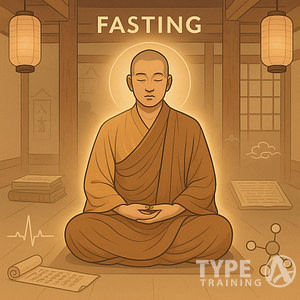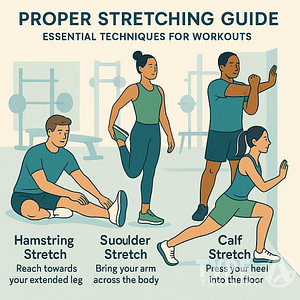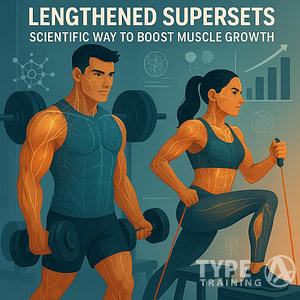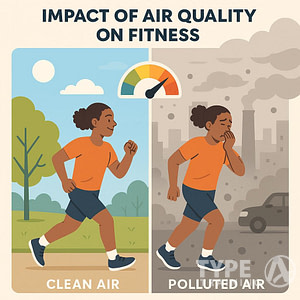The debate between Germ Theory and Terrain Theory continues to shape modern medicine. Germ Theory, pioneered by Louis Pasteur, posits that specific microorganisms cause diseases.
On the other hand, Terrain Theory, championed by Antoine Béchamp, emphasizes the importance of the body’s internal environment in determining health and susceptibility to illness.
Both theories have significantly influenced medical practices, with Germ Theory forming the foundation for many current treatments and preventive measures. Germ Theory has led to the development of antibiotics, vaccines, and hygiene practices that have saved countless lives. Meanwhile, Terrain Theory has contributed to a holistic approach to health.
Popular posts:
This holistic approach focuses on nutrition, lifestyle, and overall well-being to strengthen the body’s natural defenses.
Understanding the principles behind these theories can help you make informed decisions about your health. While Germ Theory remains the dominant paradigm in modern medicine, some practitioners argue for a more balanced approach that considers both external pathogens and internal bodily conditions.
This ongoing discussion continues to shape medical research and public health strategies.
Key Takeaways
- Germ Theory focuses on specific pathogens as the primary cause of disease, while Terrain Theory emphasizes the body’s internal environment.
- Both theories have influenced modern medical practices, with Germ Theory leading to vaccines and antibiotics, and Terrain Theory promoting holistic health approaches.
- The debate between these theories continues to shape medical research and public health strategies, influencing how you approach your personal health.
Historical Overview of Germ Theory and Terrain Theory
The debate between germ theory and terrain theory has roots in 19th century scientific discoveries. These competing views shaped our understanding of disease causation and prevention.
Louis Pasteur and the Development of Germ Theory
Louis Pasteur, a French chemist and microbiologist, played a pivotal role in developing germ theory. His work in the late 1800s demonstrated that specific microorganisms cause specific diseases.
Pasteur’s experiments with fermentation and pasteurization laid the groundwork for this revolutionary concept.
You can trace the origins of germ theory to Pasteur’s research on silkworms. He identified bacteria as the cause of a disease devastating French silk production. This discovery led to broader applications in human and animal health.
Pasteur’s work culminated in the development of vaccines, most notably for anthrax and rabies. These breakthroughs solidified germ theory as a cornerstone of modern medicine and public health practices.
Antoine Béchamp and the Terrain Theory Emergence
Antoine Béchamp, a contemporary of Pasteur, proposed an alternative view known as terrain theory. This perspective emphasized the importance of the body’s internal environment in disease development.
Béchamp argued that microorganisms were not the primary cause of disease but rather a symptom of an imbalanced bodily terrain. He believed that these microbes could change form and function based on their environment.
His theory suggested that maintaining a healthy internal terrain was key to preventing illness. This idea resonated with some who felt germ theory oversimplified the complex nature of health and disease.
Claude Bernard and the Internal Environment
Claude Bernard, a French physiologist, contributed significantly to the concept of the internal environment, or “milieu intérieur.” His work bridged aspects of both germ theory and terrain theory.
Bernard emphasized the importance of maintaining a stable internal environment for optimal health. He believed that disruptions to this balance could lead to disease, aligning with some aspects of terrain theory.
His research on homeostasis provided a scientific foundation for understanding how the body maintains equilibrium. This work influenced both medical practice and the ongoing debate between germ and terrain theories.
Principles of Germ Theory
Germ theory revolutionized our understanding of disease causation and prevention. It established the foundation for modern medicine and public health practices.
Role of Microorganisms in Disease
Germ theory posits that specific microorganisms cause specific diseases. These pathogens include bacteria, viruses, fungi, and parasites.
When these microbes enter your body, they can multiply and cause infection.
Infectious diseases are transmitted through various routes. You can contract them through direct contact, contaminated food or water, or airborne particles. Some pathogens can survive on surfaces, increasing the risk of transmission.
Your immune system plays a crucial role in fighting these invaders. It recognizes foreign microorganisms and mounts a defense. This process explains why you develop symptoms like fever or inflammation when infected.
Contribution of Robert Koch
Robert Koch, a German physician, made significant contributions to germ theory. He developed a systematic approach to identify disease-causing microorganisms.
This method, known as Koch’s postulates, includes:
- Isolating the microorganism from an infected host
- Growing it in pure culture
- Introducing it to a healthy host and observing disease development
- Re-isolating the microorganism from the newly infected host
Koch’s work led to the identification of specific pathogens responsible for diseases like tuberculosis and cholera. His methodology became a cornerstone for microbiology and infectious disease research.
Advancements in Vaccination and Antibiotics
Germ theory paved the way for two major medical breakthroughs: vaccines and antibiotics.
Vaccines work by introducing a weakened or inactivated form of a pathogen to your immune system. This triggers an immune response, preparing your body to fight off future infections.
Vaccines have been instrumental in controlling or eradicating diseases like smallpox and polio. They continue to be a crucial tool in public health, preventing millions of deaths annually.
Antibiotics, on the other hand, directly target bacterial infections. They work by either killing bacteria or inhibiting their growth.
The discovery of penicillin by Alexander Fleming in 1928 marked a turning point in medicine. Antibiotics have since saved countless lives by treating previously deadly bacterial infections.
Understanding Terrain Theory
Terrain theory focuses on the body’s internal environment as the primary factor in health and disease. It emphasizes maintaining balance and resilience within your body’s ecosystem.
The Importance of the Internal Ecosystem
Your body’s internal environment plays a crucial role in your overall health. Terrain theory suggests that your microbiome and bodily systems create a unique “terrain” that can either promote health or allow disease to thrive.
This approach emphasizes the importance of maintaining a balanced internal ecosystem. You can support your body’s terrain through proper nutrition, hydration, and detoxification.
Terrain theory proponents believe that a healthy internal environment can resist pathogens and prevent illness. By focusing on your body’s terrain, you may be able to enhance your natural immunity and overall wellbeing.
Balance and Resilience in Health
Terrain theory emphasizes the importance of balance and resilience in maintaining good health. Your body’s ability to adapt to stressors and maintain homeostasis is key to preventing disease.
To support your body’s resilience, you should focus on:
- Proper nutrition
- Regular exercise
- Adequate sleep
- Stress management techniques
By addressing these factors, you can strengthen your body’s ability to maintain balance and ward off illness. Terrain theory suggests that a resilient internal environment is less susceptible to external pathogens.
Terrain Theory’s Approach to Chronic Diseases
Terrain theory offers a unique perspective on chronic diseases. It suggests that these conditions result from long-term imbalances in your body’s internal environment rather than from specific pathogens.
This approach focuses on addressing the root causes of chronic diseases by:
- Identifying and correcting nutritional deficiencies
- Reducing toxic load on the body
- Supporting organ function and detoxification pathways
By improving your overall terrain, you may be able to address chronic health issues more effectively. Terrain theory encourages a holistic approach to health, considering multiple factors that contribute to your wellbeing.
Comparing Disease Causation
Germ Theory and Terrain Theory offer distinct perspectives on how diseases develop and spread. These views shape approaches to health, prevention, and medical interventions.
Environmental Influence versus Infectious Agents
Terrain Theory emphasizes the role of your body’s internal environment in disease development. It suggests that your overall health and immune system determine susceptibility to illness.
In contrast, Germ Theory focuses on specific pathogens as the primary cause of diseases.
Terrain Theory proponents argue that a healthy internal environment can resist infections. They believe factors like nutrition, stress levels, and toxin exposure play crucial roles in your health.
Germ Theory, widely accepted in modern medicine, states that microorganisms are the main cause of many diseases. This view has led to the development of antibiotics, vaccines, and other targeted treatments.
Holistic Health Perspectives
Terrain Theory advocates for a holistic approach to health. This perspective encourages you to focus on overall well-being rather than just treating symptoms.
Key aspects of the holistic approach include:
- Balanced nutrition
- Regular exercise
- Stress management
- Detoxification
Proponents argue that these practices strengthen your body’s natural defenses. They believe this approach can prevent diseases and reduce the need for medical interventions.
The Debate on Medical Interventions
The differing views on disease causation lead to debates about appropriate medical interventions.
Terrain Theory supporters often criticize the heavy reliance on pharmaceuticals and vaccines. They argue that these interventions may disrupt your body’s natural balance.
Germ Theory-based approaches focus on:
- Targeted treatments for specific pathogens
- Vaccination programs
- Hygiene and sanitation measures
These interventions have led to significant public health improvements, including the eradication of some diseases. However, critics argue that this approach may overlook the importance of overall health and environmental factors in disease prevention.
The Role of Immune System in Health
Your immune system plays a crucial part in maintaining your health and well-being. It protects you from harmful pathogens while supporting beneficial microorganisms.
Understanding how your immune system functions can help you make informed decisions about your health.
Vaccine-induced Immunity
Vaccines stimulate your immune system to produce antibodies against specific pathogens. This process mimics natural infection without causing disease.
When you encounter the actual pathogen, your body is prepared to fight it off quickly.
Vaccine-induced immunity can provide long-lasting protection against many infectious diseases. It works by training your immune cells to recognize and respond to specific antigens.
Some vaccines require multiple doses or boosters to maintain immunity. Your healthcare provider can advise you on the appropriate vaccination schedule for your needs.
Natural Defenses and Beneficial Microbes
Your body has several natural defense mechanisms that work alongside your immune system. These include physical barriers like skin and mucous membranes, as well as chemical defenses such as stomach acid.
Beneficial microbes in your body play a significant role in supporting your immune function.
These microorganisms help maintain a balanced ecosystem within your body, preventing harmful pathogens from taking hold.
Your gut microbiome, in particular, is closely linked to your immune system. A diverse and healthy gut flora can enhance your body’s ability to fight off infections and reduce inflammation.
Probiotics and Overall Health
Probiotics are live microorganisms that can provide health benefits when consumed in adequate amounts. These beneficial bacteria can support your immune system and overall health in several ways.
Regularly consuming probiotic-rich foods or supplements may help:
- Strengthen your gut barrier function
- Enhance your body’s production of natural antibodies
- Regulate your immune responses
Probiotics can also contribute to better digestive health and may help alleviate symptoms of certain gastrointestinal disorders. Some studies suggest that specific probiotic strains might even help reduce the severity and duration of common respiratory infections.
To maximize the benefits of probiotics, consider incorporating a variety of fermented foods into your diet or choosing a high-quality probiotic supplement.
Public Health Implications
The debate between Terrain Theory and Germ Theory significantly impacts public health strategies and policies. These competing perspectives shape approaches to disease prevention, healthcare practices, and public education efforts.
Sanitation and Hygiene Practices
Germ Theory has profoundly influenced modern sanitation and hygiene practices. You’ll notice its impact in public health campaigns emphasizing handwashing, disinfection, and food safety.
Terrain Theory advocates argue for a broader approach. They emphasize the importance of maintaining a healthy internal environment through nutrition, stress reduction, and environmental factors.
This perspective suggests that a strong immune system is your best defense against illness.
Public health policies often blend both approaches. You’ll find recommendations for both personal hygiene and overall health maintenance.
This balanced strategy acknowledges the role of both external pathogens and internal bodily conditions in disease prevention.
Impact of the COVID-19 Pandemic
The COVID-19 pandemic highlighted the ongoing tension between Germ Theory and Terrain Theory in public health responses.
Germ Theory-based measures dominated initial responses, with mask mandates, social distancing, and vaccination campaigns.
You may have noticed a shift in focus as the pandemic progressed. Public health messaging began to incorporate elements of Terrain Theory, emphasizing the importance of overall health.
Recommendations for boosting immunity through diet, exercise, and stress management became more prevalent.
This evolution in approach demonstrates the complex interplay between these theories in real-world health crises.
You’ve likely experienced firsthand how public health strategies can adapt to incorporate multiple perspectives.
Misinformation and Public Health Education
The debate between Germ Theory and Terrain Theory has fueled significant misinformation, especially online.
You may encounter conflicting claims about disease origins, prevention, and treatments. This confusion can complicate public health education efforts and undermine trust in medical institutions.
Public health educators face the challenge of providing clear, accurate information while acknowledging the complexity of disease processes.
You’ll find efforts to promote scientific literacy and critical thinking skills to help you navigate health information.
Balanced public health messaging often incorporates elements from both theories. This approach aims to provide you with a comprehensive understanding of health and disease, empowering you to make informed decisions about your well-being.
Modern Medical Practices and Future Directions
The medical landscape continues to evolve, blending traditional approaches with innovative techniques.
Integrative healthcare, ethical considerations in pharmaceuticals, and technological advancements are shaping the future of medicine.
Integrative Approaches in Healthcare
Integrative medicine combines conventional treatments with complementary therapies, addressing both germ theory and terrain theory principles.
You might encounter practitioners who emphasize holistic health alongside targeted medical interventions. This approach considers your overall well-being, including diet, exercise, and stress management.
Practitioners may recommend an active lifestyle and detoxification methods to support your body’s natural defenses. These strategies aim to create an internal environment less hospitable to pathogens, aligning with terrain theory concepts.
DNA analysis is increasingly used to personalize treatment plans. Your genetic profile can inform decisions about preventive care and targeted therapies, bridging the gap between germ-focused and terrain-oriented approaches.
The Pharmaceutical Industry and Ethics
The pharmaceutical industry plays a crucial role in developing medications based on germ theory principles.
You’ll find drugs designed to target specific pathogens or address particular symptoms.
Ethical considerations are becoming more prominent. Companies are under pressure to balance profit motives with public health needs.
You may see increased transparency in drug development and pricing strategies.
Some researchers are exploring natural compounds and terrain theory-inspired approaches to complement traditional pharmaceuticals.
This shift could lead to more diverse treatment options for you in the future.
Embracing Technological Advances in Medicine
Technology is revolutionizing medical practices, often bridging germ and terrain theories.
You’ll benefit from advanced diagnostic tools that can detect both pathogens and systemic imbalances.
Artificial intelligence is enhancing disease prediction and treatment planning. These systems analyze vast datasets, considering both microbial factors and individual health markers.
Wearable devices allow you to monitor various health parameters in real-time. This technology supports a more proactive approach to health, aligning with terrain theory’s emphasis on maintaining overall wellness.
Telemedicine platforms are expanding access to healthcare, enabling you to consult with practitioners who may offer diverse perspectives on health and disease.
Frequently Asked Questions
The debate between Germ Theory and Terrain Theory has shaped modern medicine’s understanding of disease and health. These contrasting perspectives have influenced medical practices, dietary recommendations, and approaches to disease prevention.
What are the differences between Germ Theory and Terrain Theory in medicine?
Germ Theory focuses on specific microorganisms as the primary cause of diseases. It emphasizes the role of pathogens in causing illness and the need to eliminate them.
Terrain Theory, on the other hand, emphasizes the importance of the body’s internal environment in preventing and combating diseases. It suggests that a healthy “terrain” or body can resist pathogens effectively.
How did Germ Theory change medical practice historically?
Germ Theory revolutionized medical practices by introducing the concept of sterilization. It led to improved hygiene practices in hospitals and during surgeries.
The theory also paved the way for the development of vaccines and antibiotics, dramatically changing how diseases were treated and prevented.
Why did some practitioners initially resist the Germ Theory?
Some practitioners resisted Germ Theory because it challenged long-held beliefs about disease causation. They were skeptical of the idea that invisible organisms could cause illness.
The theory also seemed to oversimplify complex health issues, leading some to question its validity and applicability in all cases.
In what ways does the Terrain Theory approach health and disease?
Terrain Theory approaches health by focusing on strengthening the body’s internal environment. It emphasizes the importance of maintaining a balanced internal ecosystem.
This approach suggests that a healthy “terrain” can naturally resist pathogens, reducing the likelihood of disease even in the presence of microorganisms.
What implications does Terrain Theory have for dietary choices in health?
Terrain Theory places significant emphasis on nutrition as a means of maintaining a healthy internal environment. It suggests that dietary choices can directly influence your body’s ability to resist disease.
Proponents of this theory often recommend whole foods, balanced diets, and avoiding processed foods to support overall health and immune function.
How has modern medicine been influenced by the concepts of Germ Theory?
Modern medicine has largely adopted Germ Theory as a fundamental principle. It has shaped the development of antibiotics, vaccines, and other targeted treatments for infectious diseases.
The theory has also influenced public health measures. These include sanitation practices and the use of personal protective equipment in medical settings.














